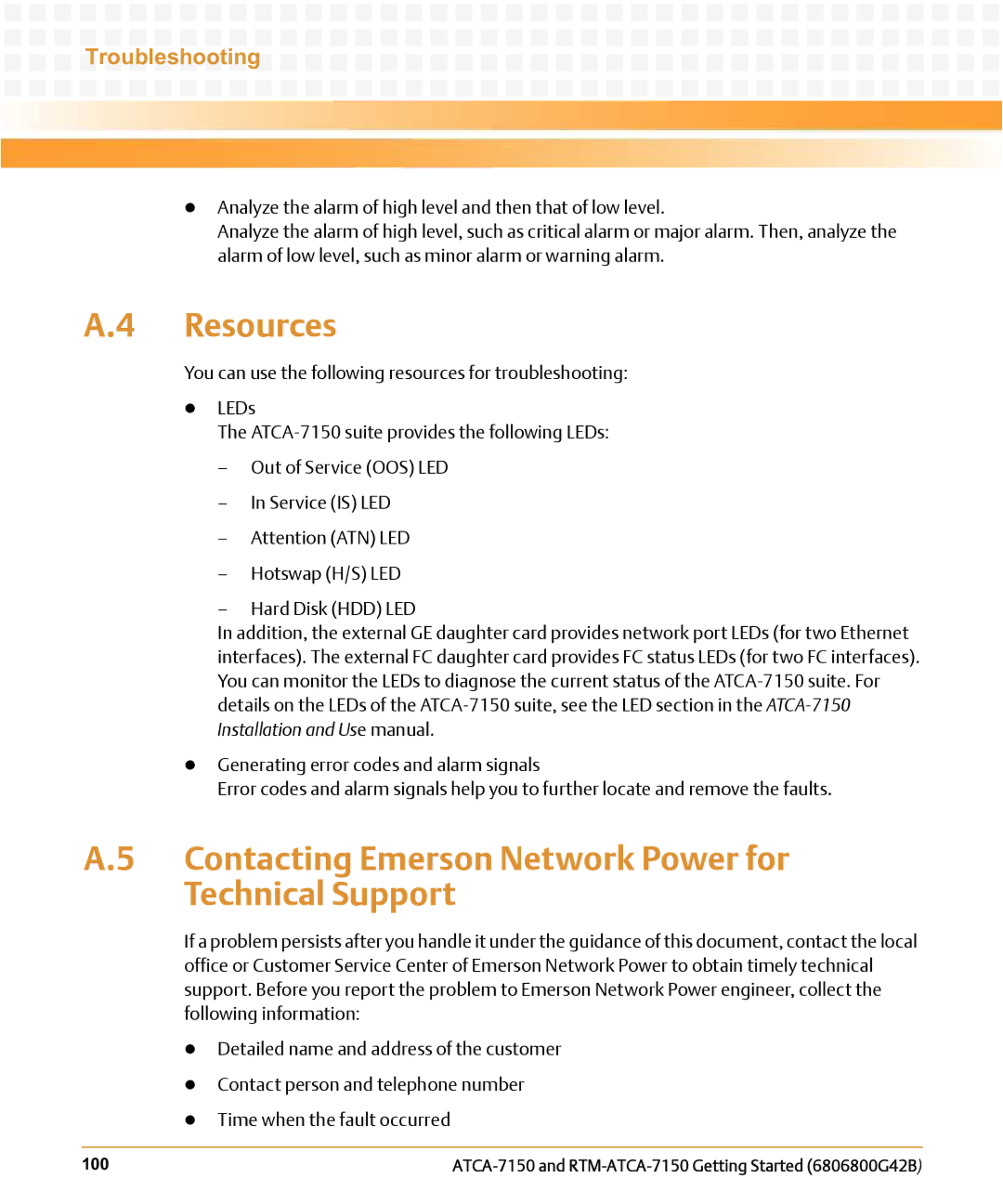
Troubleshooting
zAnalyze the alarm of high level and then that of low level.
Analyze the alarm of high level, such as critical alarm or major alarm. Then, analyze the alarm of low level, such as minor alarm or warning alarm.
A.4 Resources
You can use the following resources for troubleshooting:
zLEDs
The
—Out of Service (OOS) LED
—In Service (IS) LED
—Attention (ATN) LED
—Hotswap (H/S) LED
—Hard Disk (HDD) LED
In addition, the external GE daughter card provides network port LEDs (for two Ethernet interfaces). The external FC daughter card provides FC status LEDs (for two FC interfaces). You can monitor the LEDs to diagnose the current status of the
zGenerating error codes and alarm signals
Error codes and alarm signals help you to further locate and remove the faults.
A.5 Contacting Emerson Network Power for
Technical Support
If a problem persists after you handle it under the guidance of this document, contact the local office or Customer Service Center of Emerson Network Power to obtain timely technical support. Before you report the problem to Emerson Network Power engineer, collect the following information:
zDetailed name and address of the customer
zContact person and telephone number
zTime when the fault occurred
100 |
